- Types of Lice
- Lice in hair
- Lice and Nits
- Nits
- Nits
Lice and their guides are an unpleasant phenomenon, but quite common. An insect is a small wingless ectoparasite that has three pairs of tenacious legs. They reliably attach it to human hair, on which it places its eggs - nits. They are easy to see with a careful examination of the head. The time interval during which the development of eggs and the appearance of adults is called the incubation period of lice and nits in humans.
Ectoparasites feed on blood, piercing the skin of their victim. They are carriers of dangerous infectious diseasesincluding typhoid. The phenomenon associated with the appearance of pests on the scalp is called pediculosis and requires immediate treatment.
Ways of infection and signs of lice

There are several types of lice:
By themselves, they cannot appear, since the parasites lack wings. Therefore, the only way to get infected is through contact. Pediculosis can be infected in various situations, the most common are the following cases:
- a trip in crowded public transport;
- visiting public places: pool, sauna, hairdresser, gymnasium and other organizations;
- in kindergarten, schoolhospital or hotel;
- direct contact with a person infected with lice or household items.
These factors indicate that unsanitary conditions are not always the cause of infection with lice and nits. Insects prefer to settle on healthy clean hair.
The incubation period of pediculosis is not an explicit course of the disease without typical symptoms. It largely depends on the degree of infection and ranges from 6 to 12 days. If the number of lice is small and the sensitivity of the skin is weak, then the patient may not feel discomfort for a long time. However, the primary imperceptible infection is dangerous because lice possess ability to quickly reproduce, constantly putting off nits.
To the main symptoms of lice include such phenomena:
- intense, debilitating itching of the scalp;
- small spots of a grayish-bluish color on the skin;
- multiple combs contributing to the development of acute dermatitis;
- the appearance of inflammatory papules in places of bites;
- the presence of nits in the hair.
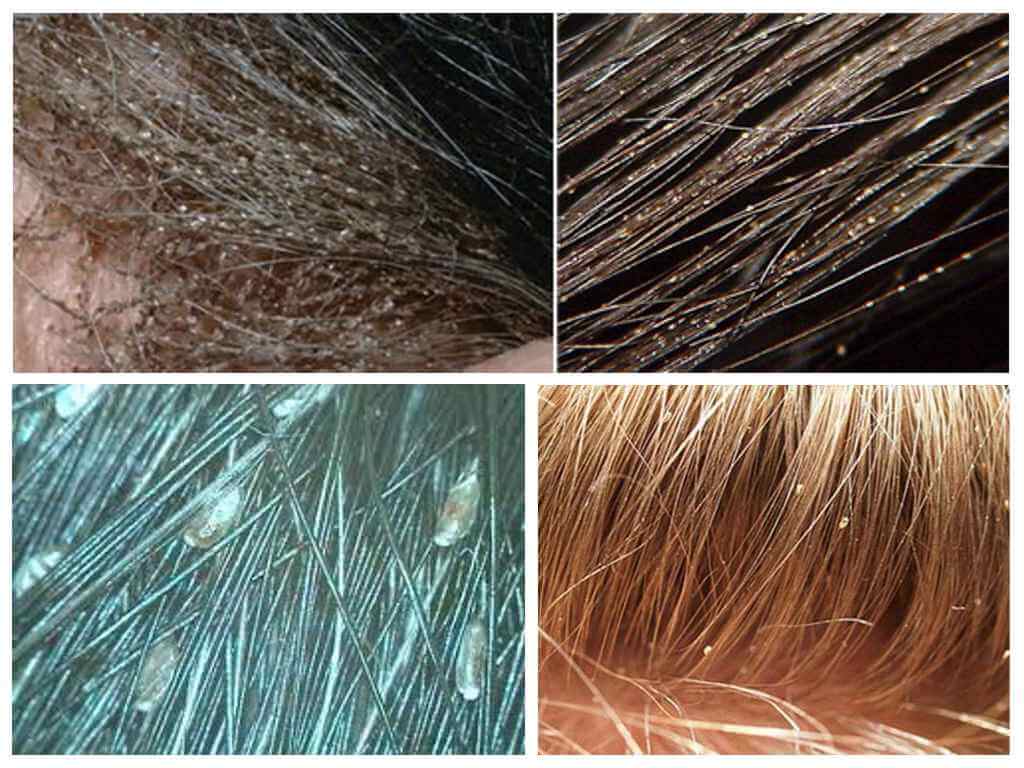
With advanced forms of the disease in a person, signs of anemia can be fixed, the hair takes on an untidy, sticky look with a specific putrefactive odor. How lice and nits look in hairdemonstrates a photo.
Important!
For one meal, the parasite absorbs up to 5 mg of blood, introducing saliva into the wound with a special enzyme that prevents its coagulation, with a slight infection at first lice bites go unnoticed.
Parents often ask the question - where do lice come from in children. The answer is quite simple - babies often exchange clothes or hats, use other people's combs, as well as other personal items. Children are almost always in contact with a large number of people in kindergarten, school, summer health camps or just in the yard.In order to avoid the spread of parasites, it is necessary to examine the child’s head as often as possible and, when the first signs of lice and nits are detected, a comprehensive pediculosis treatment all family members.
Life cycle of parasites
Lice live without a human not for long, since they cannot exist without the nutrition that they need for normal life and active reproduction. The more favorable the microclimate, the shorter the incubation period of nits and lice. Therefore, it is very important to notice pediculosis at the initial stage, especially if there is a risk of infection. Contrary to the prevailing opinion that lice appear only in homeless and untidy people, pediculosis is detected in absolutely prosperous citizens. Parasites prefer clean heads, as there is a greasy layer on dirty hair, which do not like lice.
A louse does not live long - just over 30 days. In the scientific literature there is no unequivocal answer to the question of how many nits lice deposits per day. Their number is directly proportional to the nature of external conditions and the type of parasite. A head louse produces 3 to 4 eggs daily, a clothes parasite from 6 to 14, and a female pubic pest can lay about 50 eggs in its life.

Based on this information, it is estimated that, on average, one female for the entire period of her life is able to postpone up to 140 nits. There is more than one parasite on the head of a person, so it is easy to guess how many insects can mature in a short period of time. That is why the advanced stage of pediculosis requires a rather lengthy and painstaking process. elimination of lice in a child or adult.
Important!
Regardless of the degree of infection, anyone with a diagnosis of head lice is a potential carrier of lice.
The incubation period of ectoparasite from an egg to a mature pest varies from 16 days to a month. The rate of development and after how many days lice hatch from nits are directly affected by the environmental temperature background. From the moment of its birth to the end of its life cycle, parasites go through 4 stages:
- nits (egg);
- larval stage;
- nymph of the first and second order;
- adult insect.
Interesting!
Over a lifetime, a louse sheds three times. This is because the chitinous shell does not increase with the body. It is torn and in its place a new one is formed.
Head lice are insects with an incomplete transformation cycle, as evidenced by the stages of their development. These periods are relatively short and therefore the life span of the insect is small, but the reproduction rate is record high. The periods that louse passes in its development have different time boundaries. Generalized life cycle of ectoparasite is as follows:
- Nits are light yellow or white teardrop-shaped dots attached to the base of the hair. They have a very small size - approximately 1 mm in length, similar to dandruff, so it is important to be able to distinguish nits from seborrhea. The ripening of a live egg lasts from 5 to 8 days. Many are interested in the question of what nits eat. Inside the opalescent sac is a special nutrient fluid, which is necessary for the full development of the larva. The optimal conditions to ensure a minimum incubation period for nits are normal air humidity and an external temperature of 31 ° C. At temperatures above 40 ° C and less than 22 ° C, the formation of the larva ceases and it will not be able to hatch.
Nits - Larvae can develop from one to 10 days. The length of the period is regulated by the temperature background. Half an hour after the appearance, she begins to feed on the blood of her master.
- The nymph of the first age group is formed within 5 days.
- A second-order nymph develops for 8 days and turns into an adult insect - an adult.
The formed parasites acquire the ability to reproduce after the first bite at the end of the molting. The mating process occurs on the first or second day after the transformation of the nymph into an adult insect. The ripening period of nits to lice depends on the temperature of the environment. Parasites hatch per week at 25-26 ° C, and at 32-33 ° C this interval is reduced to 5-6 days.
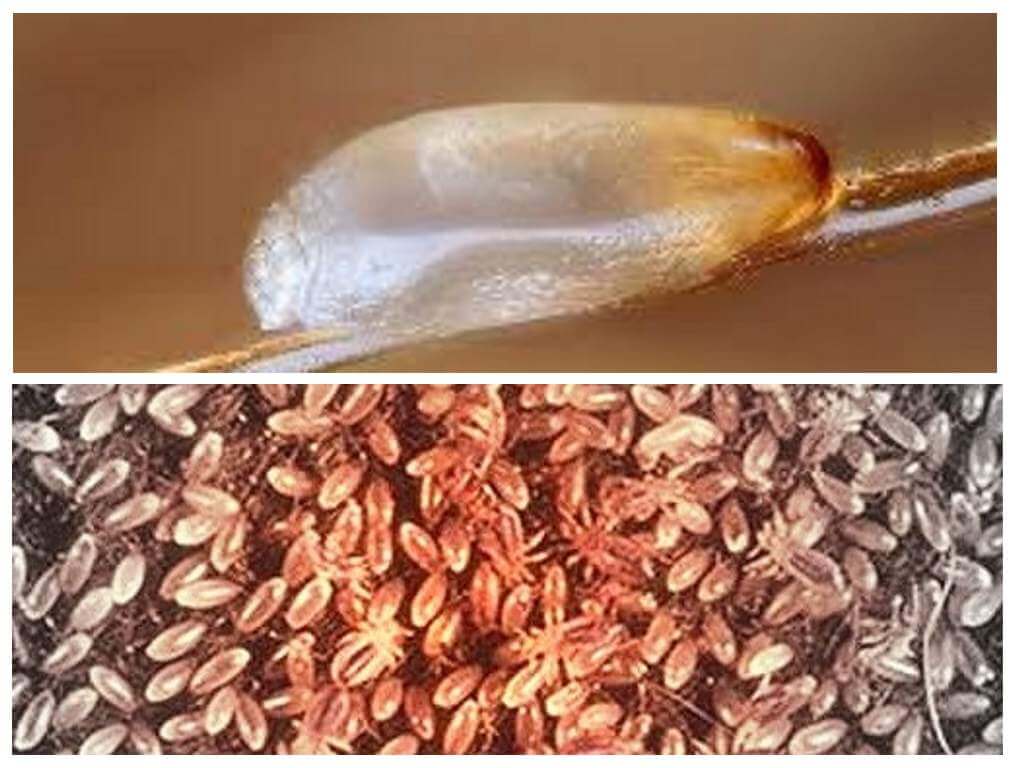
Lice treatment
If the first signs of infection with dangerous parasites are detected, you should immediately consult a dermatologist who will recommend effective remedies for lice and tell you how to properly treat the infected person. The development of lice is associated with a risk of dangerous infectious diseases. After the appearance of lice in humans, the scalp begins to peel and dry out, the lymph nodes become inflamed. Permanent itching can damage the scalp, resulting in sores, hair sticking together and start to smell unpleasant.
There are a large number of effective medications that inhibit the life of insects or contribute to their destruction. It should be noted that not all means are capable of destroy nits. Therefore, in order to get rid of parasites, it is necessary to carry out processing several times, as well as carefully comb out your head special frequent comb, which is attached to drugs or purchased separately.
Get rid of lice and nits possible at all stages of their development. It is necessary to start treatment in a timely manner with highly effective shampoos, sprays, ointmentslotions and other products that are presented in a wide range in pharmacies. In addition may apply folk remedies for lice.






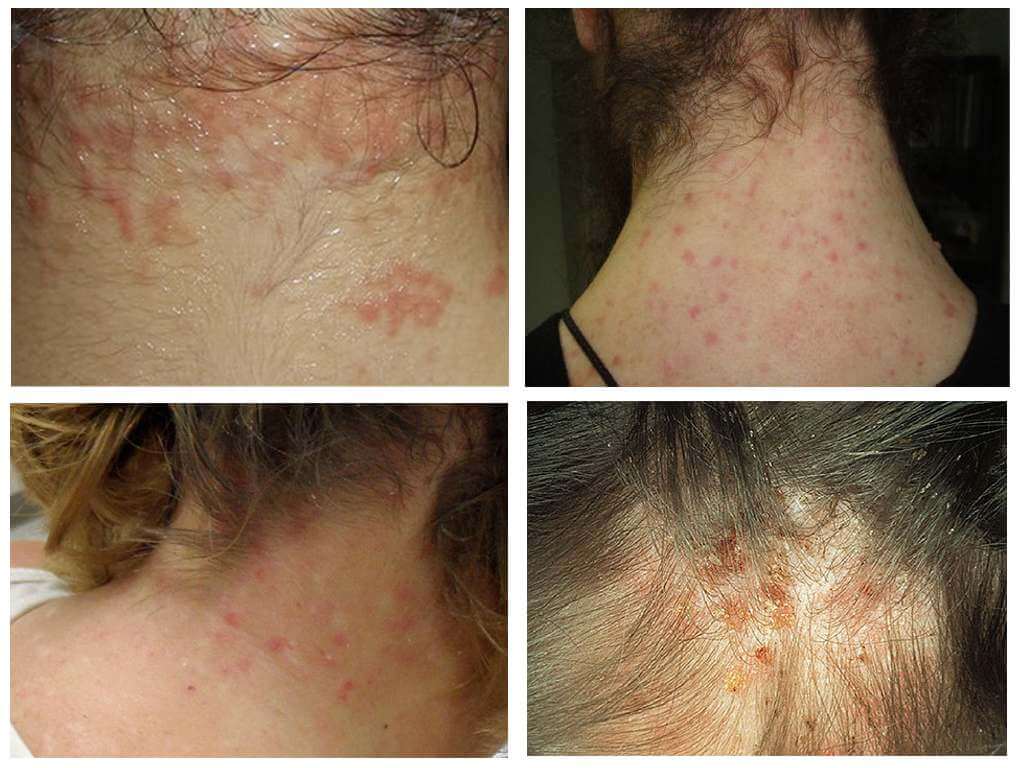
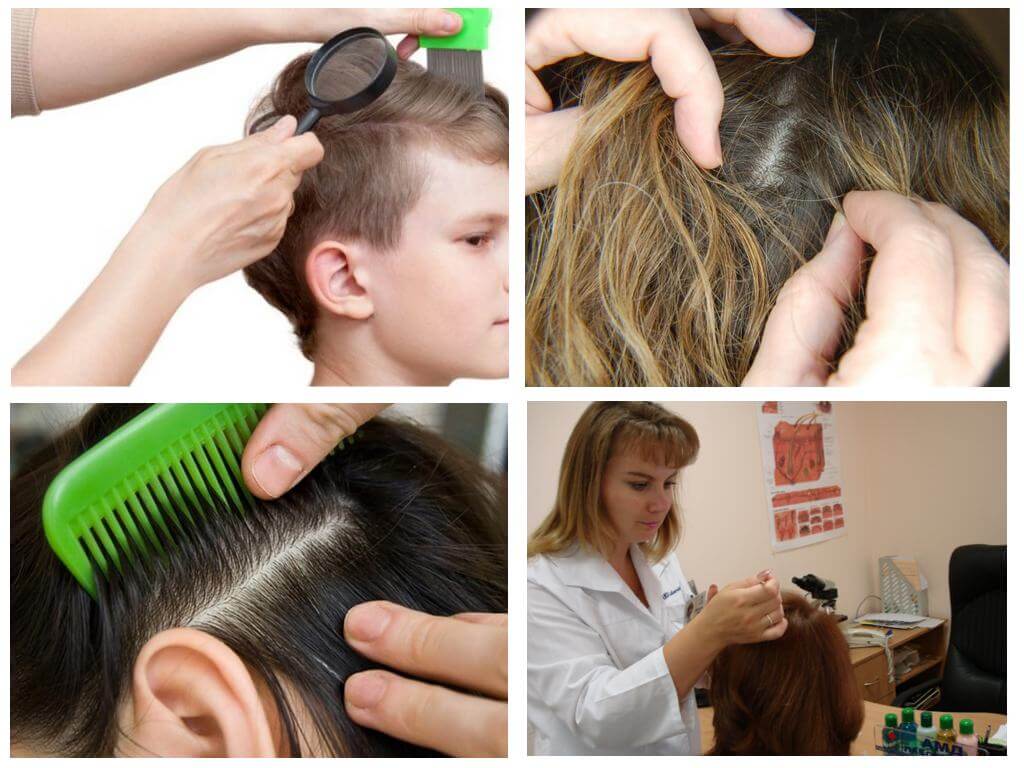
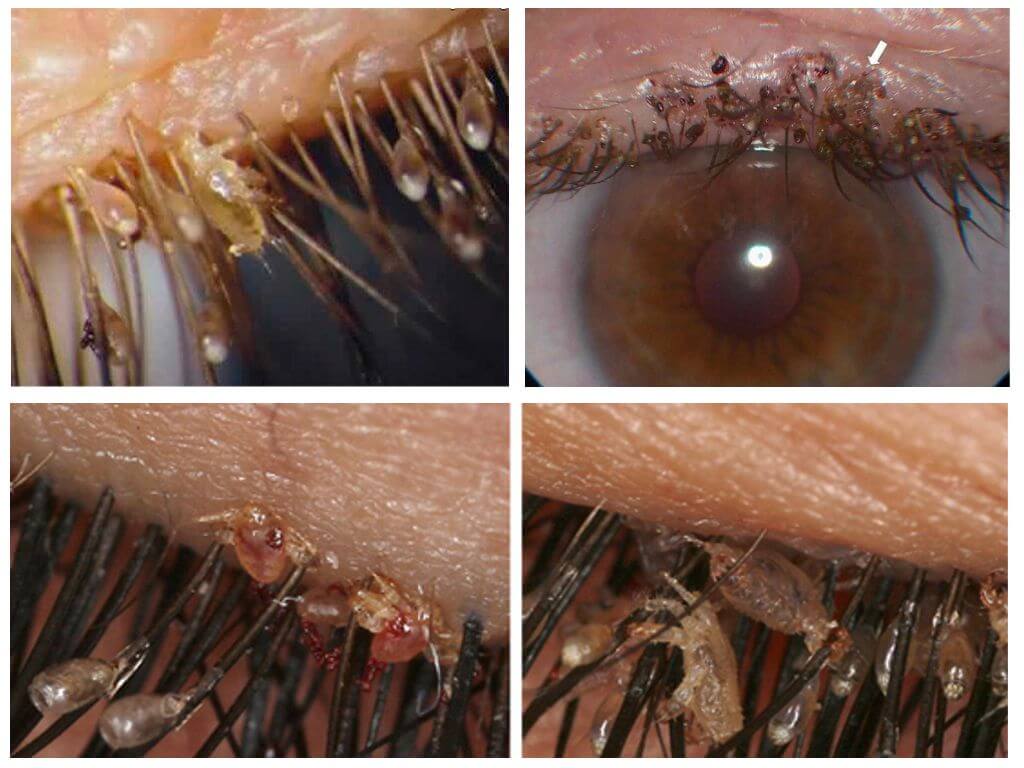

Thank you for the timely information. The youngest son brought a "gift" from the kindergarten. Getting to the procedures.
I heard that you can get rid of lice and nits with hair dye. Is it so?
Hair dye with peroxide destroys lice, as its shell corrodes. In addition, it dries out the nits, thereby preventing them from developing. However, this method is not always effective, although it helps a lot.
Useful information, especially for parents with young children. Maybe they will become more attentive to their children and will respond in a timely manner to the problem.
We encountered parasites after the child ended up in the hospital. Fortunately, they reacted to his scratches on time and quickly dealt with the help of Paranit and the comb.
Tell me, can lice appear just like that - on their own?
Lice do not appear on their own, they are transmitted only by direct contact with a patient with pediculosis.
We struggled with parasites by folk methods - camphor alcohol treated the baby's head, after 20 minutes, washed off everything with shampoo and carefully combed the hair. After the second procedure, there were no insects.
She brought lice from a business trip. At first I didn’t understand what was happening, and when I saw the nits on my hair, I was horrified. I bought some medicine at the pharmacy, but nothing helped, then, on the advice of a friend, I treated my head with kerosene and sunflower oil at a rate of 1: 1. The procedure lasted 1.5 hours. My head is completely clean. Recommend.
Thanks for the science. An unpleasant phenomenon, but once it exists, it is simply necessary to know about the features of their development, the methods of infection.